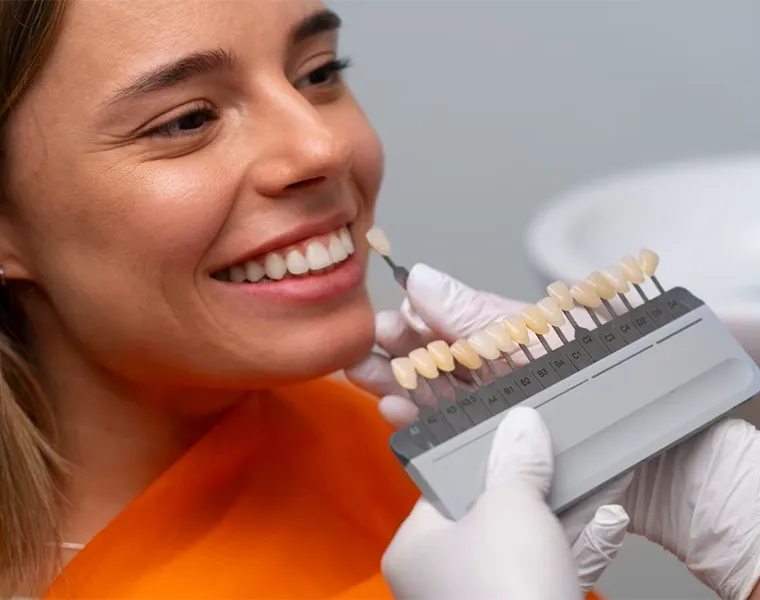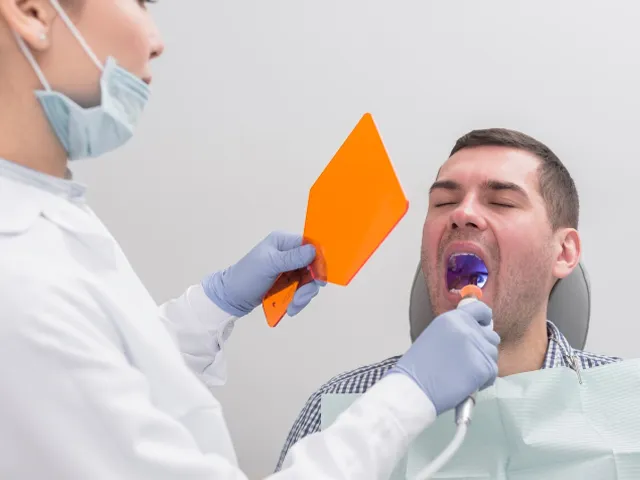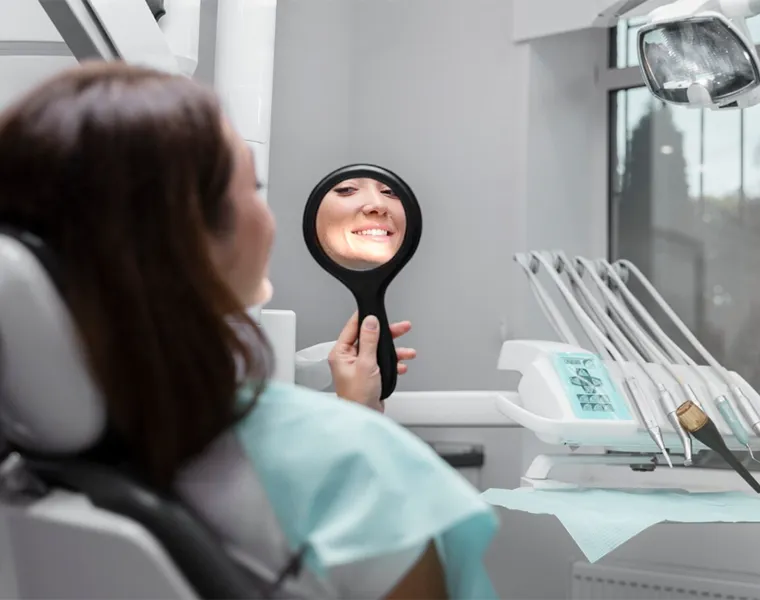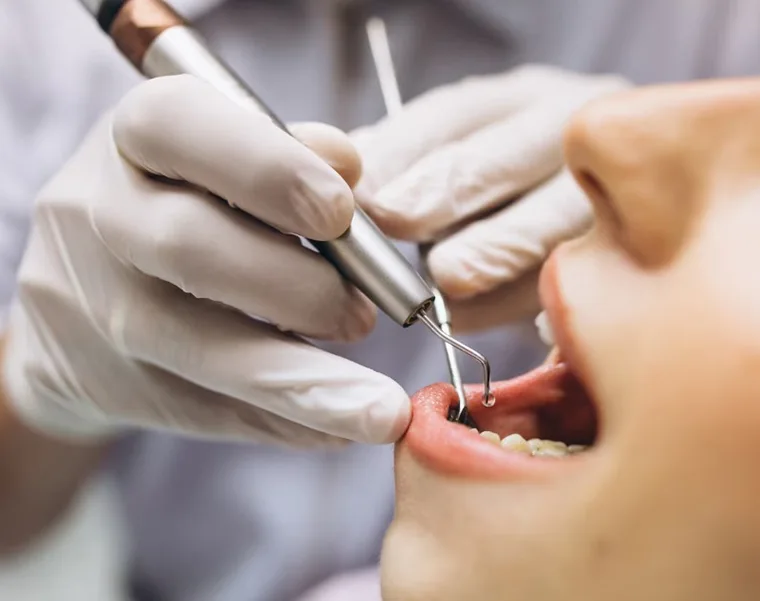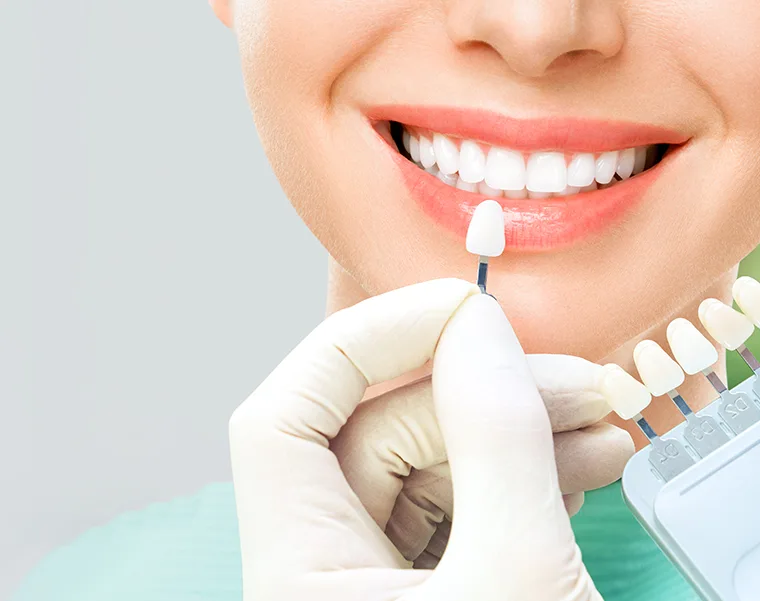What is tooth abscess? A dental abscess is the result of an infection in the tooth or surrounding tissues. This infection is usually bacterial and is characterized by severe pain, swelling and inflammation. If left untreated, this condition, which occurs at the root of the tooth or in the gums, can spread to surrounding tissues. The presence of an abscess is often an indication of oral problems such as cavities or gum disease.
What is tooth abscess? The most common symptoms of this condition include intense pain, tenderness and swelling in the facial area. The abscessed tooth may be hypersensitive to hot or cold foods. When the infection progresses, fever, swollen lymph nodes and a bad taste in the mouth may occur. Untreated abscesses can spread to the jawbone or other parts of the body, causing serious health problems. Therefore, early diagnosis and treatment is very important. Treatment options include abscess drainage, removal of infected tissue and antibiotics. Regular dental check-ups and attention to oral hygiene are necessary to prevent abscesses.
What Causes a Tooth Abscess?
A dental abscess is inflammation caused by an infection in the tooth or surrounding tissues. This usually occurs when bacteria reach the inner layers of the tooth or the gums. If not treated in time, a dental abscess can lead to serious health problems.
Tooth abscesses are often caused by tooth decay, dental trauma or poor oral hygiene. In addition, gum abscesses that develop as a result of gum disease can cause inflammation in and around the root of the tooth, causing pain.
A tooth abscess that is left untreated for a long time, for example for 1 month, can cause the infection to spread to surrounding tissues. This can lead to inflammation of the jawbone or serious complications in other parts of the body. Such chronic abscesses must be examined and treated by a dentist. During the treatment process, the source of the infection is cleaned and antibiotic treatment is applied if necessary.
In order to prevent the formation of a dental abscess, it is important to brush and floss regularly and pay attention to oral care. Regular care is essential for healthy teeth and gums. Early measures minimize the risk of tooth abscess and protect oral health.

Tooth Abscess for 1 Month
A dental abscess is an infection in the tooth or around the gums. It is usually caused by tooth decay, gum disease or trauma. A tooth abscess that does not go away for 1 month indicates that the infection has become serious and requires urgent treatment. Such chronic abscesses not only cause pain, but can also spread to surrounding tissues and even to other parts of the body, posing life-threatening risks.
A tooth abscess usually does not go away on its own. On the contrary, left untreated, the infection can progress and lead to bigger problems. Even if the symptoms subside, the infection can persist inside the tooth. Therefore, when a tooth abscess is noticed, a dentist should be consulted.
A tooth abscess that does not go away for a long time is usually caused by the following conditions:
- Untreated tooth decay
- Gum abscess
- Incorrect or incomplete treatment
- Immune system problems
A tooth abscess that has not gone away for 1 month should not be neglected as it can lead to serious health problems. Consulting a specialist dentist is important to solve the source of the problem and to have healthy teeth.

Symptoms of Tooth Abscess
A dental abscess is the result of an infection in the tooth or surrounding tissues. This usually occurs when bacteria reach the inner layers of the tooth. The symptoms of a tooth abscess may differ depending on the type of infection and the level of progression. In some cases, even a tooth abscess that does not hurt can indicate a serious infection.
A tooth abscess usually presents with the following symptoms:
- Severe, throbbing or persistent toothache
- Swelling and tenderness in the area where the tooth is located
- Swelling in the chin, neck or face
- Hypersensitivity to hot and cold foods
- Bad taste and bad odor in the mouth
- General symptoms of infection such as fever and malaise
When symptoms of a dental abscess are noticed, a dentist should be consulted immediately. Treatment usually involves drainage of the abscess, cleaning of the infected area and antibiotics. Early treatment prevents the spread of infection to surrounding tissues and prevents more serious complications.
Tooth Abscess Treatment
A dental abscess is an inflammatory infection of the tooth or surrounding tissues. If left untreated, it can lead to serious health problems. Therefore, the question of how to get rid of a tooth abscess is of vital importance for those who experience this condition. Treatment usually focuses on eliminating the source of the infection and clearing the pus.
Treatment for a tooth abscess can vary depending on the location and severity of the abscess and the patient’s general health. Here are the common methods used to relieve a tooth abscess:
- Drainage of the abscess: The dentist drains the accumulation of pus from the abscessed area. This prevents the infection from spreading and relieves pain.
- Root canal treatment: If the source of the abscess is an infection of the tooth that has progressed to the pulp, root canal treatment is performed. In this procedure, the infected tissues are removed and the tooth is saved.
- Antibiotic treatment: Antibiotics may be prescribed to prevent the infection from spreading to surrounding tissues. However, antibiotics alone will not completely cure the abscess.
- Tooth extraction: If the tooth cannot be saved, the source of the infection is completely removed by extracting the tooth.
Tooth abscess rupture is when the pus accumulated in the abscess spontaneously leaks out. This may provide temporary relief, but it does not mean that the infection is completely gone. For this reason, a dentist should be consulted even if the abscess bursts.
Which Antibiotic is used for Tooth Abscess?
A dental abscess is a serious dental infection, usually caused by the spread of bacteria to the tooth or surrounding tissues. The use of antibiotics in the treatment of such infections is an important step to control the infection and prevent its spread. However, choosing the right antibiotic depends on the type of infection and the general health of the patient.
In the treatment of dental abscesses, dentists usually prefer the following antibiotics:
- Amoxicillin
- Amoxicillin combined with clavulanic acid
- Metronidazole
- Clinidamisin
Antibiotics are only one part of treating a dental abscess. The source of the abscess (e.g. an infected tooth or gum) must be removed by a dentist.
A wisdom tooth abscess forms around impacted or partially impacted wisdom teeth. Bacteria can accumulate in this area and cause infection. In the treatment process, the abscess is drained and antibiotic treatment may be applied to prevent the spread of infection. The impacted tooth may need to be surgically removed.
Some patients may seek natural antibiotics for tooth abscess. However, natural methods should only be considered as a complement to dental treatment. They are insufficient to eradicate the infection. Consultation with a professional dentist is essential for the infection to heal completely.
Libredent is an Ankara dental clinic where you can apply for tooth abscess and other oral and dental problems. You can contact us for detailed information and appointment.


